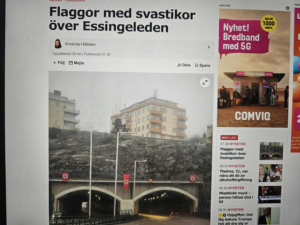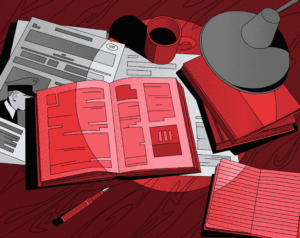This ePaper is a publication by transform!europe and written by Pierre Balas. Download the full version here. transform!europe is a European Left Think Tank and Network.
The European Parliament (EP) is yet another institution where we are able to see the rise of the far-right and its influence on policies and political agendas. This global trend does not come to a halt, and the paper aims at examining the far-right in the EP from 2019 up until today. The focus here is on what happened after the 2019 election, including the organisation of the far-right in the EP, the connections and divides between far-right parties, their general view on the EU, and their general influence in the EP.
The term “far-right” here refers to political groups sitting to the right of the European People’s Party (EPP): Identity and Democracy (ID), European Conservatives and Reformists (ECR) and some of the Non-Attached MEPs (NA).
The paper is divided into four main sections, with two focuses. The first section analyses the changes in the 2019 legislature comparatively to the previous one (2014-2019), including group structures, election results, and the impact of Brexit. The second section sheds light on the far-right’s views on the EU as a whole. This section is followed by the first focus, detailing the challenges for far-right unity in the EP. The third section examines the material and immaterial benefits for far-right parties to invest in the EU, and further sheds light on the positionality of far-right parties to understand their influence in the EP. The fourth section highlights three recent votes to understand the political strategies of the far-right. Lastly, the second focus concludes the paper with a conversation with Nathalie Brack, political science professor at the ULB.
Table of Contents
Summary
Introduction
Abbreviations
I. Far-Right in the European Parliament: How Has It Evolved Since 2019?
1. The Far-Right After the 2019 European Elections
2. Changes in Group Composition Since 2019
II. What Are the Far-Right’s Criticisms of the European Union and its Counter-Projects?
1. The Far-Right’s Criticisms of the EU
2. ID’s and ECR’s Counter-Projects for the European Union
3. Other Topics to Consider
#1 Focus: The Absence of a Single Far-Right Group in the EP. Why?
1. The Will of Union: From an Initial Ambition to More Modest Achievements
2. Reality Check: Points of Contention
III. How Far-Right Political Parties Use the EU?
1. Material and Immaterial Benefits of Investing the European Arena
2. ID and ECR in EP Top Jobs
3. ID, a Victim of the “Cordon Sanitaire” vs. ECR, a Respectable Group
IV. A Look on Three Votes
1. EU-Vietnam Trade and Investment Protection Agreements (2020)
2. Conditionality for the Protection of the Union Budget (2020)
3. New Avenues for Legal Labour Migration (2021)
#2 Focus: Interview with Nathalie BRACK
Appendix
Methodological Approach and Remarks on Data
Bibliography
The full ePaper can be downloaded directly via transform!europe







